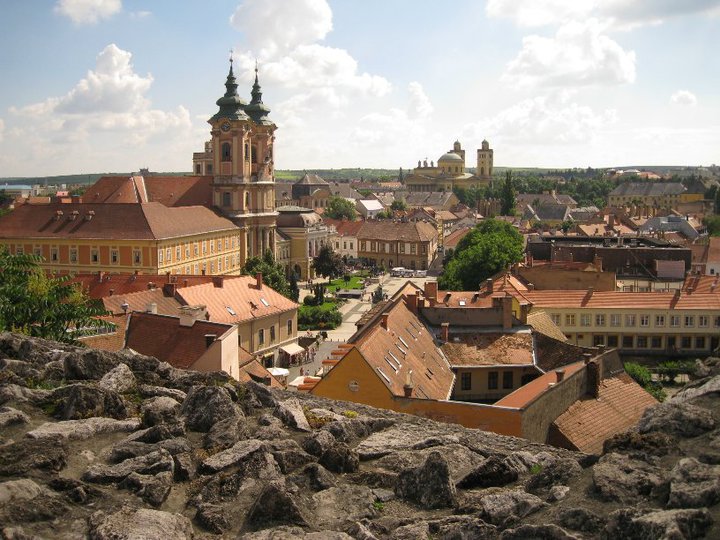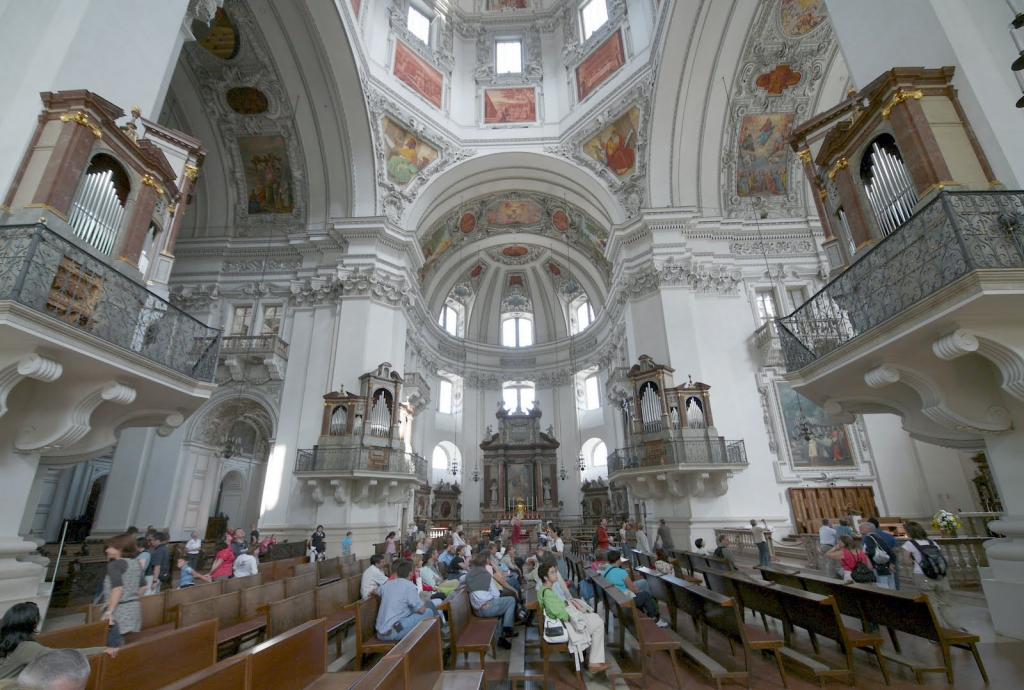The Land of Mozart
A new school year inevitably heralds a new column for me. And since I traveled so much this past summer, it made sense to write a European travel column. Ergo, EuroTravels. Each article will focus on one of my favorite cities, and believe me, narrowing them down to five or six was both difficult and a bit heartbreaking. But I managed.
One of the major perks of having a flat in Budapest is that it makes traveling to nearby countries more convenient than it probably should be. And for someone who loathes flying, living in the center of Europe (for the summers, at least) extends the option of taking a train instead of a plane. That's how I made it to the first destination of this column.
If you're a fan of Wolfgang Amadeus Mozart, you'll know that he was born in Salzburg, Austria, which is why this article is titled "Land of Mozart" (though The Sound of Music was filmed here, too). But that's the extent of the composer's relevance. Although I did buy a Mozart umbrella. You know those umbrellas that have reproductions of famous Impressionist paintings on them? Well, mine is like those, except with the notes of Mozart's "Turkish March" on it. Anyway, back to Salzburg.
The city's technically been occupied since the Neolithic Age, but it only really became important after it won its independence from the German Duchy of Bavaria in the 14th century. It also has ties to Hungary, because in the late 1700s, many Salzburgers emigrated to what was then the Kingdom of Hungary to repopulate areas after the plague and the Turkish invasion.

Salzburg means "salt fortress" in German, either because it sits on the Salzach (salz means "salt") River or because of the salt mines nearby. Its Altstadt, or Old Town, is one of the most beautiful places I've seen, with its predominantly Baroque architecture and charming, little streets. The Old Town is the reason I've been to Salzburg twice (in 2002 and 2010). It lives up to its name, for it really makes you feel like you've been transported back to the 1700s. You may be on your way to a performance by the 17-year-old Mozart. Or perhaps you're a nun ascending the exhaustive steps to the Stift Nonnberg (Nonnberg Abbey).
Stift Nonnberg

The Nonnberg Abbey is a Benedictine monastery that was founded in 714 AD, making it the oldest women's religious house in the German-speaking world. However, after a fire destroyed most of the convent, it was rebuilt between 1464 and 1509, then made into the Baroque style in the 1880s. If you've seen The Sound of Music, you may recognize Nonnberg Abbey as the convent in which Maria was a novice. Though the churches and chapels are lovely, and I got a thrill out of walking the grounds, I'd probably have as difficult a time adjusting to life there as Maria did.
Salzburger Dom

The Salzburg Cathedral dates back to the 17th century, though, like the Nonnberg Abbey, this Baroque church was actually founded in the 700s but has since been rebuilt multiple times, the final time in the 1610s-1620s. I'm not religious, but I nevertheless marveled at the cathedral's beauty. With its clean, intricately carved, white walls, it's one of the brightest churches I've seen. It's also one of the least "cluttered" I've seen; frescoes adorn only the upper walls and the dome. Yet it is no less magnificent than the more ornate cathedrals. And in the legs of the pews, unicorn heads are carved into the wood. So of course I'd like the Salzburger Dom!
Pferdeschwemme

As if unicorn-pews aren't enough, Salzburg just has to make me love it even more with its Horse Pond. Yes, that's what the long, funny-looking, bolded word means. Built in 1693 to provide water for the prince's horses, the Horse Pond features a central statue called the Horse Tamer with a backdrop of equine frescoes. Although now it's on a busy street with a bus stop in front of it, the Pferdeschwemme is my favorite place in Salzburg. I have more pictures of it and with it than probably what's considered normal...
Festung Hohensalzburg

No stay in Salzburg is complete without a trip up to this castle fortress. Literally translated as "High Salzburg Fortress," the Hohensalzburg is one of Europe's largest medieval castles. Following the city's trend of really old original buildings, construction on the castle fortress began in 1077, and the current structure is architecturally unchanged - albeit renovated - since 1515. Although it's certainly an imposing figure, its most impressive feature, in my opinion, is the Reisszug, the furnicular railway that dates back to the late 1400s-early 1500s. It was used to transport various goods and materials to the castle and is believed to be the oldest existing railway in the world.
References:
1. http://en.wikipedia.org/wiki/Salzburg
2. http://en.wikipedia.org/wiki/Nonnberg_Abbey
3. http://en.wikipedia.org/wiki/Salzburg_Cathedral
4. http://www.visit-salzburg.net/sights/horsewell.htm
5. http://en.wikipedia.org/wiki/Hohensalzburg_Castle






